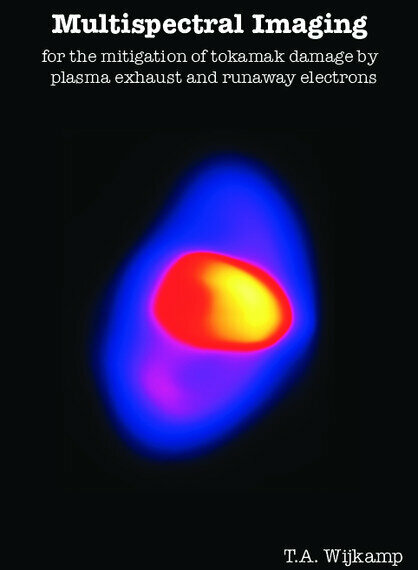Imaging for the mitigation of tokamak damage by plasma exhaust and runaway electrons
Tijs Wijkamp defended his PhD thesis at the Department of Applied Physics and Science Education on March 22nd.
![[Translate to English:] [Translate to English:]](https://assets.w3.tue.nl/w/fileadmin/_processed_/6/f/csm_Wijkamp%20Banner%20image_aef432fd0d.jpg)
Green energy is gaining momentum, driven by an ever-growing energy demand and a widespread desire to limit climate change. The growing number of solar panels and wind turbines bear witness to this. However, these technologies cannot deliver energy day and night and offer a relatively small electricity output per square meter. Fission reactors don't suffer the same limitations, but safety and pollution concerns give rise to resistance against the construction of new facilities. Fusion offers an alternate that overcomes some of the issues of fission reactors, but much remains to be answered in relation to fusion technologies. For his PhD research, Tim Wijkamp looked at ways to minmise damage to so-called tokamak fusion reactors by high-energy electrons.
In the search for alternative energy sources, humanity is drawing inspiration from stars like our sun. These large gaseous spheres compress hydrogen gas into heavier particles through their massive gravity in a process called nuclear fusion. This process releases enough energy to keep these giants burning in space.
Humankind has made some steps towards technologies that to create own inherently safe and non-polluting fusion energy sources on Earth. By heating a small amount of two particular hydrogen species (deuterium and tritium) to some 150 million degrees Celsius, these particles collide hard enough to fuse occasionally.
The charged particles that make up this astronomically hot ‘plasma’ can be caught in the donut-shaped magnetic field in the vacuum vessel of a so-called ‘tokamak’ reactor. A small portion of the released energy keeps the plasma at a suitable fusion temperature. The remainder escapes the magnetic field carried by uncharged neutron particles, heating the reactor wall. This heat is extracted by a cooling liquid to drive turbines, leading to the production of electricity.

Technological challenges
The construction plan for a working fusion reactor still contains a few question marks. One of the technological challenges that needs to be addressed before we have access to a nearly inexhaustible source of energy relates to the exhaust of fuel and fusion residuals from the hot plasma.
This exhaust must be cooled before it reaches a dedicated bin to prevent the latter from melting away. Multiple strategies have been conceived to avoid this, which are being tested experimentally. This raises the question of how to assess which plan works best. For his PhD thesis, Tijs Wijkamp decided to explore this by doing one simple thing – opening his eyes and looking inside.
Filtered cameras
With help from special filtered cameras, Wijkamp and his colleagues can visualise the light that is emitted by the exhaust. The cameras carefully separate the spectrum of light in terms of color from violet to red.
From the camera images, information on what particles are present in the exhaust can be extracted, in what numbers, and at what temperatures. In a tokamak experiment in England, this technique was applied to test various shapes of the disposal channel between the plasma and the bin.
The main conclusion is that increasing the distance between the bin and the plasma allows the exhaust to cool down in a surprisingly efficient manner.
Runaway electrons
In his PhD thesis, Wijkamp devotes much attention to using filtered cameras to address an entirely different problem caused by so-called `runaway electrons'.
These are charged particles in the plasma that approach the speed of light. The potential damage resulting from losing a significant number of these electrons to the wall is too large to ignore.
Therefore, researchers are experimentally testing ways to get rid of these particles safely. One challenge herein is making the behavior of the electrons visible to the experimenter.
Wijkamp’s work describes a method for determining the energy and location of runaway electrons using filtered camera imaging. The technique was applied in experiments on a Swiss tokamak. Here, he has uncovered a mechanism that acts to limit the energy of the electrons and, thereby, the damage they can inflict on the tokamak.
Title of PhD thesis: Multispectral imaging for the mitigation of tokamak damage by plasma exhaust and runaway electrons. Supervisors: Rogers Jaspers, Marco de Baar, and Ivo Classen.